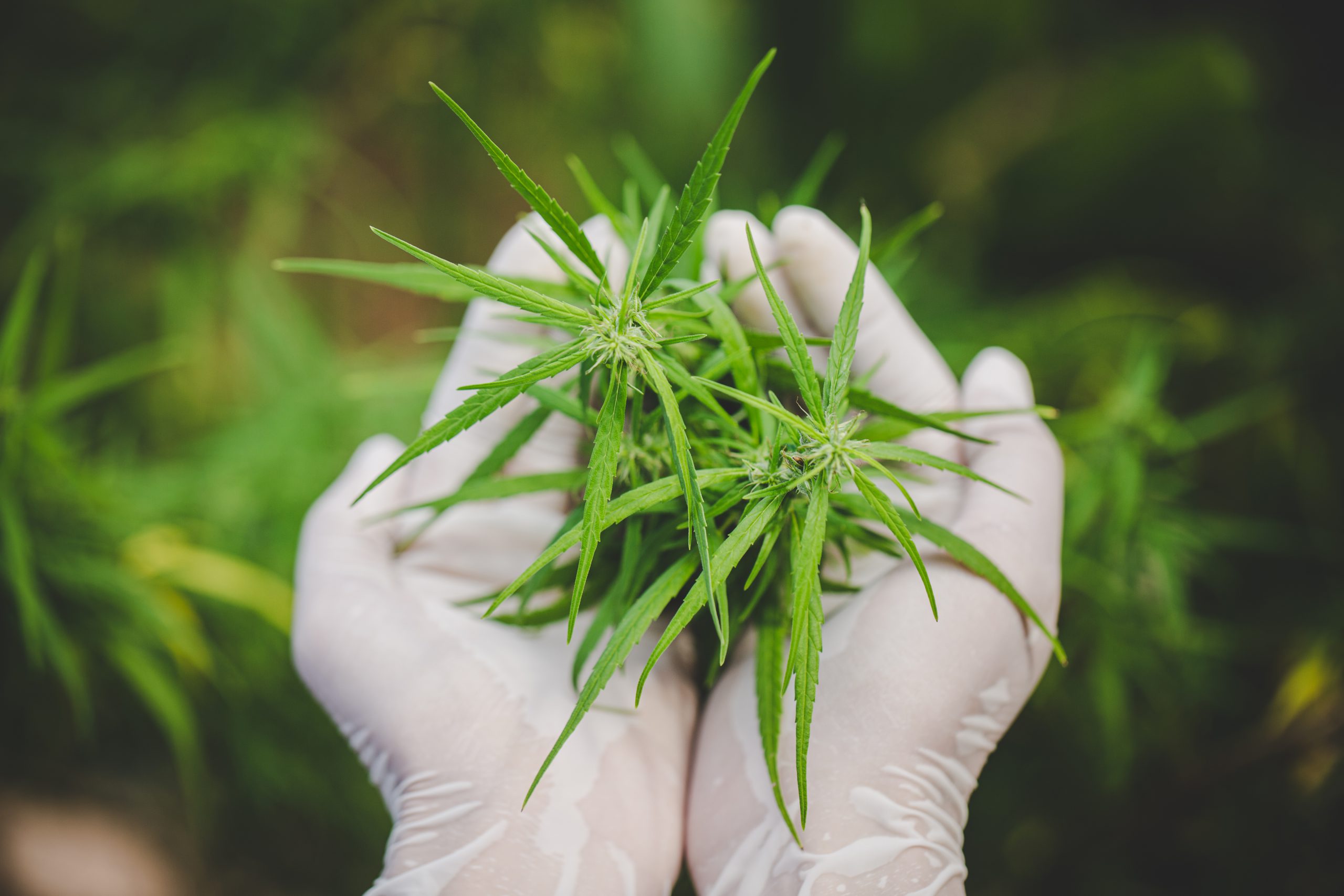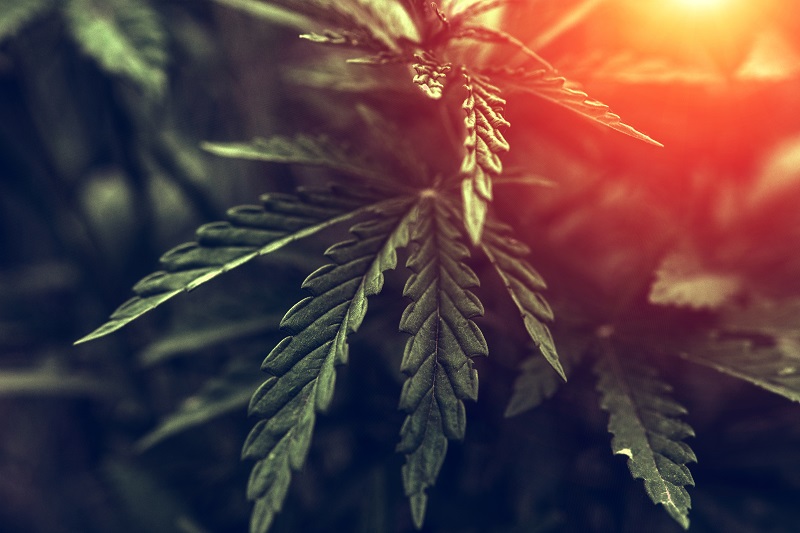Proven Skin Care Benefits of CBD

Nasty acne breakouts, oily or dry skin, fine lines, wrinkles, and skin allergies are just some of the skin-related problems that are not only distressing but can affect the quality of life. In recent times, CBD (cannabidiol), a natural compound derived from cannabis plant species, has taken center stage due to its anti-inflammatory, anti-oxidant, and hypoallergenic benefits.
The dynamic ecosystem of the skin
The skin is a soft-tissue that covers a total area of 20 square feet. Not only is the skin the largest organ in the human body in terms of both weight and surface area, but it is also the most complicated. It has a dynamic nature in that it is ever-changing with a network of specialized structures and cells.
The primary function of this organ is to act as a protective barrier against pathogens. With its multi-layer cushioning system, protective oils, and cellular barriers, the skin protects the internal organs.
However, the skin is much more than a protective barrier between the environmental dangers and the internal organs. It plays a key and active role in health by regulating body temperature and gathering sensory information.
There are three main layers in the skin called the epidermis, the dermis, and the bottom-most layer of the subcutaneous tissue.
Epidermis: The epidermis forms the outermost layer in the skin. Its thickness can vary based on its location in the body. For instance, the epidermal layer is the thinnest at just half a millimeter on the eyelids while it is at its thickest (1.5 millimeters) on the soles of our feet and palms.
The epidermis is composed of five layers:
- Stratum basale: Also called the basal cell layer, this layer is the bottom-most one and has columnar-shaped cells that constantly divide and drive older cells to the skin’s surface. As these older cells move up, they flatten out and eventually die. These dead skin cells are then shed.
- Stratum spinosum: The layer that sits on top of stratum basale is the squamous cell layer, which is the thickest among all the layers in the epidermis. It is comprised of newly formed keratinocytes. These are specialized cells that make keratins- a type of fibrous, tough proteins found in hair and nails. Keratins impart strength and structure to nails and skin. Stratum spinosum also has Langerhans cells that work to prevent infection.
- Stratum granulosum: This layer is also composed of keratinocytes.
- Stratum lucidum: Stratum lucidum translates as a ‘clear layer’ in Latin. It is a transparent, thin layer found only in areas that have thick skin, such as soles and palms. The layer is composed of dead skin cells visible on microscopy.
- Stratum corneum: Being the topmost layer of the epidermis, stratum corneum contains dead, flattened keratinocytes, which are shed roughly once in two weeks.
This layer also contains three specialized cells. These include melanocytes, which make melanin, a pigment present in eyes, skin, hair, and also in brain tissue, Langerhans cells, which are the ‘first responders’ in the skin’s immune system to defend against infections, and Merkel cells.
Dermis: Below the epidermis layer is the middle layer of the skin called dermis. This is the layer that has sweat glands, oil glands (sebaceous glands), hair follicles, connective tissue, nerve endings, and blood capillaries. The dermis has two layers, the upper layer of the papillary dermis and the thick, bottom layer of the reticular dermis. Like epidermis, the thickness of this layer also depends on where it is located in the body. This is also the layer that houses collagen, elastin, and reticular fibers.
Collagen is a structural protein that is found in abundance throughout all tissues of the body, including bones, tendons, muscles, and skin. Its primary function is to provide structural integrity and strength to tissues. In the dermis, collagen forms fibroblasts, a fibrous cellular network that promotes new cell growth. Collagen also plays a role in shedding dead skin cells and replacing them with new ones.
Elastin is a highly elastic protein that allows tissues to stretch and contract, apart from helping them maintain their structure. Elastin is the protein that helps your skin return to the normal position after it is pinched or stretched.
Subcutaneous tissue: It is the innermost and deepest layer of the skin, made up of fat, larger blood vessels, nerves, and connective tissue.
Subcutaneous tissue plays a role in regulating body temperature while cushioning the internal organs and structures against external trauma or impact.
Common skin problems
From acne to blackheads, dryness to serious skin conditions such as eczema, there are many skin-related problems caused by multiple external and internal factors.
It is important to gain insights into these problems and the factors that cause them to be able to prevent, treat, and manage them in an optimal way.
Acne: Acne vulgaris or acne is one of the most common skin health problems. According to some estimates, acne is said to affect 9.4% of the population across the world. It is the eighth-most common disease among all diseases worldwide. Acne is a chronic condition that is linked to inflammation of the sebaceous follicles, leading to blackheads, whiteheads, pimples, pustules, cysts, and scars.
Acne can be difficult to manage and is also linked to psychological problems such as depression and loss of self-esteem.
Multiple factors are believed to cause acne that includes stress, hormonal imbalance, inflammation, wrong diet, and vitamin deficiency. Of these, inflammation and hormonal imbalance are known to be the major triggering factors. Acne is an inflammatory disease with inflammatory molecules being found across all stages of the development of acne lesions. The characteristic soreness and redness are due to inflammation.
Skin dryness and itching: Many people across the world suffer from dry and itchy skin, particularly on forearms, lower legs, and elbows. The skin becomes scaly and rough and is often accompanied by intense itchiness that is distressing. While low humidity, sun exposure, stress, dehydration, or overheating in winter can lead to dryness and skin itching, it can also be caused by low amounts of oil produced from the skin glands with age. Overuse of soaps, perfumes, and antiperspirants can also worsen the problem.
While itching can be related to skin dryness, chronic itching – known as pruritus – can have many underlying causes such as allergy or systemic diseases. While there are different reasons for chronic pruritus, inflammation of the skin causes the cutaneous itch.
Inflammatory conditions such as rosacea and psoriasis: Psoriasis is a skin condition where there is a rapid build-up of skin cells on the surface that can lead to scaly patches. These patches can be painful and itchy. Psoriasis can impact the quality of life, being a chronic inflammatory condition. Keratinocytes, the specialized cells that make keratin, a protein found in skin, nails, and hair, are thought to play a key role in psoriasis that leads to the distressing symptoms of redness, scaliness, and soreness.
Rosacea is also a chronic inflammatory condition that is difficult to treat and is marked by flushing, redness and pus-filled, red bumps.
Sunburn, skin sensitivity: Sunburn is the result of excessive exposure to ultraviolet rays of the sun that cause radiation burn. The increased volume of sunburn is associated with a higher risk of skin cancer. Certain medications such as tetracyclines, sulfonamides, NSAIDs (nonsteroidal anti-inflammatory drugs), and retinoids used to treat acne and rosacea can also increase the risk of sunburn.
Skin allergies: Allergic contact dermatitis is caused by exposure to an allergen present in cosmetics, food, or other substances. Atopic dermatitis or eczema is a common skin problem that is believed to be due to the weakening of the skin barrier that predisposes it to inflammation and irritation.
Proven skin health benefits of CBD
The endocannabinoid system (ECS), along with its constituent cannabinoid receptors (CB1 and CB2), play key roles in many body functions, including pain and itch sensation, appetite, memory, immune system response, and metabolism.
A systematic review found that ECS significantly regulated many functions in the skin, such as cellular growth, cell differentiation, proliferation, and hormone production. ECS regulates the way skin cells divide, grow, survive, and die, apart from influencing their immune competence. Skin conditions, such as allergic dermatitis, acne, psoriasis, dryness, excess oil production, and even skin cancer, are linked to a disruption in this balance.
CB2 receptor activation, according to researchers, exerts anti-inflammatory effects. Cannabidiol’s ability to activate CB2 receptors makes it a potential therapeutic agent to treat a host of skin conditions that have inflammatory processes.
According to a 2018 review titled ‘Cannabinoid Delivery Systems for Pain and Inflammation Treatment,’ topical CBD application is effective in blocking pain and inflammation.
Acne – A study published in the Journal of Clinical Investigation found that the ECS in the skin regulates cell growth and division while exerting anti-inflammatory effects. Researchers also proved that ECS plays a major role in controlling sebum (skin oil) production. They found that CBD normalizes excessive skin oil production and reduces the proliferation of oil-producing skin cells (sebocytes).
Another 2014 study also evaluated cannabidiol’s sebostatic and anti-inflammatory effects on the skin. It was found that CBD administration was effective in controlling excess skin oil production while it also exerted anti-inflammatory actions. Researchers concluded by recommending CBD to treat acne.
Skin dryness and itching – The activation of cannabinoid receptors in sensory nerve fibers is thought to play a role in itching. Lack of these receptors is believed to cause allergic contact dermatitis marked by severe itching. Researchers administered CBD cream on patients who were suffering from chronic pruritus and found that it was effective in relieving the symptom. The study found that itching reduced by 86.4%, while patients did not experience any other negative side effects such as allergies with CBD application.
Researchers believe CBD has the ability to turn off signals that relay signals from nerve endings that indicate itching.
Sunburn and sensitivity – Melanin produced by melanocytes in the dermal layer is known to have protective effects against environmental pollutants and UV rays. Sunburn is a result of excessive exposure to the sun’s radiation. Studies have found that CBD boosts melanin production, suggesting the therapeutic potential of CBD in treating sunburn and skin sensitivity.
Anti-aging – Aging is a biological process where there is reduced production of skin health proteins such as elastin and collagen. Lack of these proteins impact skin firmness, texture, and elasticity, leading to wrinkles, crow’s feet, folds, and creases. Oxidative stress is also implicated in the harsh consequences of aging. This is a process where healthy cells in the skin and body are damaged by ‘free radicals’ that are released as byproducts of metabolism. Free radicals are also present in external pollutants such as cigarette smoke, pesticides, and other toxins.
Antioxidants such as vitamin C and E have the ability to quench these free radicals. However, research has shown that CBD’s antioxidant activity is much more than that of these vitamins.
CBD anti-aging topical facial creams and eye serums can effectively combat free-radical damage to reduce fine lines, wrinkles, skin dryness, and dullness.
Anti-inflammatory– Researchers found that CBD can effectively stop the excessive production of keratinocytes that are linked to skin scaliness and patches in psoriasis. Another 2019 study sought to gain insights into the therapeutic benefits of topical CBD on inflammatory skin diseases. Daily administration of CBD cream twice was found to alleviate severe symptoms of psoriasis and atopic dermatitis.
Topical CBD administration, according to researchers, is a non-invasive and effective alternative to treat inflammatory skin conditions.
The anti-inflammatory and antioxidant properties of CBD oil, sleeping mask, or under-eye serum make it an effective treatment option for under-eye puffiness, dark circles, and soreness.
Anti-cancer: Inflammation has been strongly implicated in several types of cancer, with 15–20% of cancer deaths worldwide being linked to inflammatory processes. The hallmarks of inflammation in cancer include inflammatory cells’ presence in tumor tissue, tumor growth and metastasis, new blood vessel generation (angiogenesis). Cannabinoids show promise as anti-tumor agents due to their capacity to inhibit tumor angiogenesis and their ability to stop cell proliferation in tumors.
Research is ongoing with respect to discovering the entire gamut of therapeutic benefits of CBD. CBD-integrated topical skincare products such as facial cream, recovery lotion, eye serum, body oil, and sleeping mask are growing in popularity due to their safe, effective, and non-psychotropic properties.
More articles:



